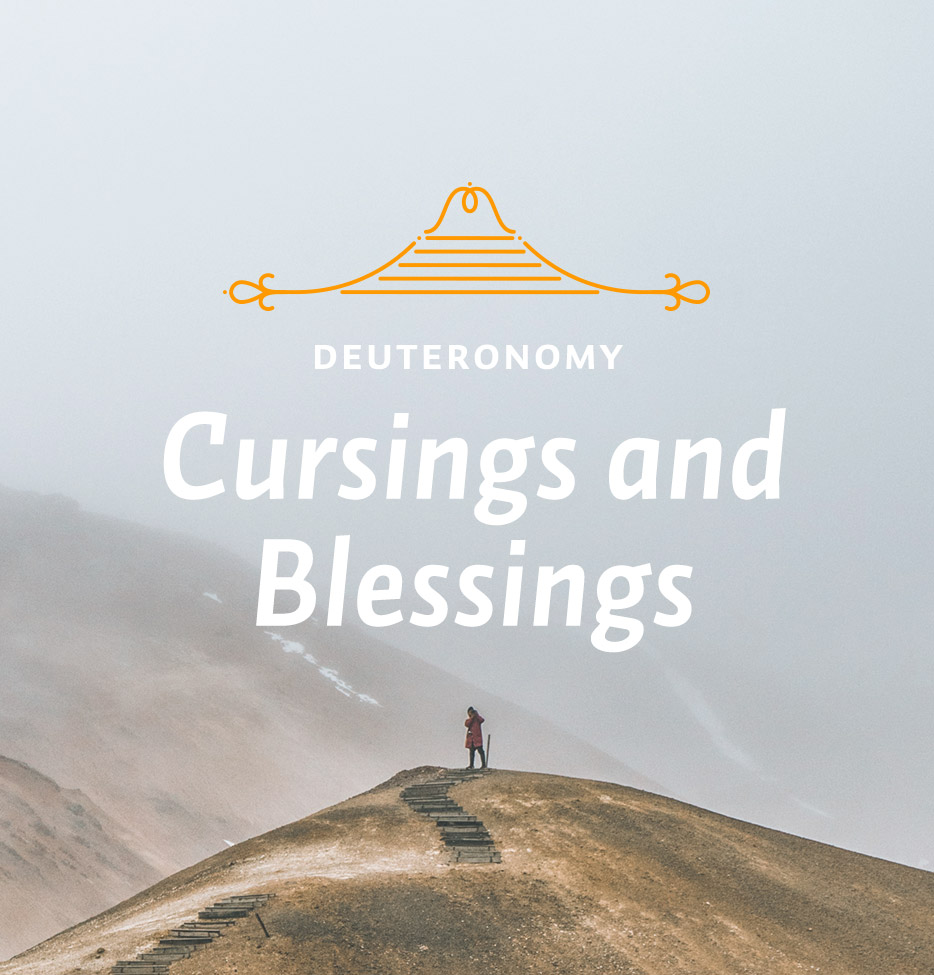There is something else about this altar that’s interesting, which is that it was to be set up on Mount Ebal. The two mountains—Mount Ebal and Mount Gerizim—were set over against one another. Curses were pronounced from Ebal, and blessings from Gerizim. The altar was set up, not in the valley between the two mountains, or even on Mount Gerizim, but on Mount Ebal. If an Israelite stood on Gerizim and could say, “I am righteous and obey the law,” he would not need the altar. Of course, the problem is that we are all sinners who really belong on Mount Ebal. We all need the altar. We must come to God as sinners, because no one is righteous. If you are going to come, you’re going to have to come as a sinner.
It is also interesting that the altar was made of fieldstone. Both the tabernacle and later the temple were made beautifully. The Holy Spirit came upon the workmen to inspire them to do beautiful work. But for this altar, they were simply to pull stones out of the field and pile them up. This shows that nothing human can go into our salvation. We don’t have anything to offer. It is all of God’s grace. Our temptation is always to embellish our altar so we can be proud of it. But there is none of that here. The people were to use fieldstones, which they were to pile up and kill an animal upon it because God says that this is the way He will save sinners.
The second point of our outline has to do with the blessings and curses. When the people came into the land and had written the law on the stones and the altar had been set up, the Israelites were supposed to stand on these two mountains, in the area of the country known as Samaria now, about 3,000 feet above sea level. At one point, the two mountains come close together. Half of the tribes were to take their places on Mount Gerizim and the other half on Mount Ebal. The Levites were to recite the blessings and the curses. And after each curse and each blessing, the people would answer by saying, “Amen.”
The curses begin in Deuteronomy 27:15, in a section giving the sins for which curses will come. After this is a section that deals with the blessings (see Deut. 28:1-14), and then it goes back to more curses (see vv. 15-68). I wish it were the other way around. But perhaps that’s a way of saying that people disobey the law more than they obey it, or that people hear the curses better than they hear the blessings.
The first section explains that the curses will come as a judgment for particular sins. This is a representative list, which we can see from the first two offenses that are mentioned: 1) carving an image or casting an idol; and 2) dishonoring one’s father or mother. The first has to do with the first table of the law, and the second has to do with the second table of the law. The curses come on those who break God’s commandments, and all of the commandments are involved.
The third sin listed has to do with the land that the people are entering. They are not to move a neighbor’s boundary stone, that is, to steal his land by falsifying the records. Today, we would call a sin involving false documents “white-collar crime.”
The next two sins have to do with taking advantage of the poor and the unfortunate—leading the blind astray and withholding justice from the alien, the fatherless, and the widow. After this, there are four curses for sexual offenses, particularly incest, and then two that have to do with murder. And then finally there is a blanket curse for those who do not obey the words of the law: “Cursed is the man who does not uphold the words of the law by carrying them out” (27:26).
Now when the list of sins was read, the people were supposed to say, “Amen.” This meant that they agreed with what was said, and that this is what morality should be, and, furthermore, that they agreed to be bound by that. This is the essence of entering into the covenant.






